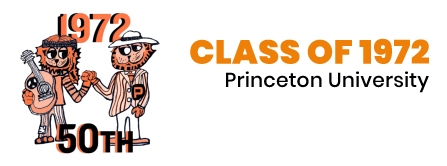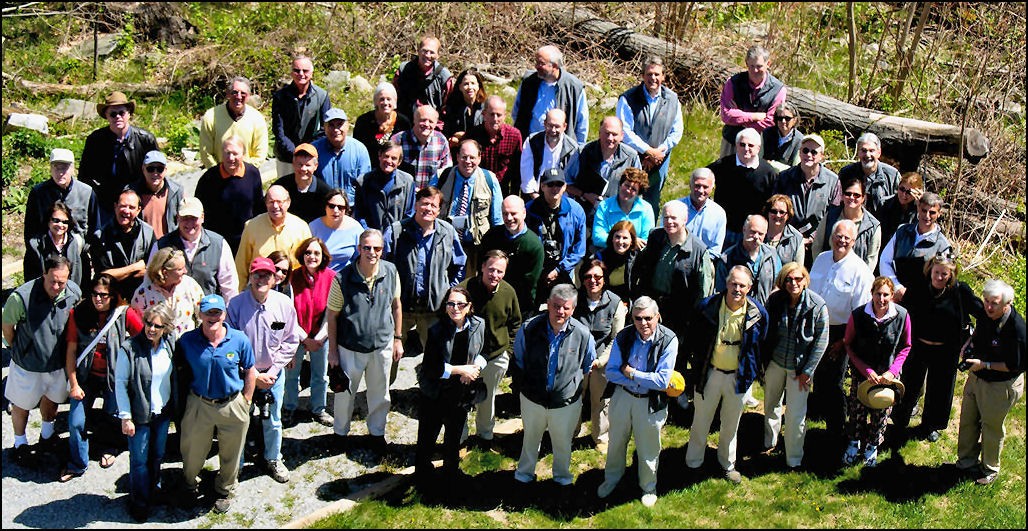 |
Antietam 2006
Princeton Class of 1972 and James M. McPherson George Henry Davis '86 Professor of American History, Emeritus May 2006
At April’s end, in the largest-ever ’72 gathering outside Princeton, 46 classmates and assorted spouses, offspring, and friends mustered from all directions for a lively, informative visit to the scene of Robert E. Lee’s September 1862 invasion of Maryland. Our guide was the indefatigable Jim McPherson, history professor emeritus, who had shown us Gettysburg eighteen months earlier. Early Saturday morning, we boarded two comfortable buses for a day of surveying the landscape and events leading up to the Battle of Antietam/Sharpsburg on September 17, 1862. Our first stops were at the summit of South Mountain, north and east of Sharpsburg, where, on September 14, outnumbered rear-guard units of Lee’s invading Confederates valiantly tried to hold off the advance of George McClellan’s Union Army of the Potomac, at three gaps (Fox’s, Turner’s, and Crampton’s) in this long north-south extension of Virginia’s Blue Ridge. At Fox’s Gap, along the course of today’s Appalachian Trail, we saw where two future presidents – Rutherford B. Hayes, wounded that day, and William McKinley – fought in the same Ohio regiment. Climbing to Turner’s Gap, as the assaulting Union battle lines moved up the mountain (against Confederate defenders led by, among others, Georgian Colquitt, Princeton 1844), we marveled at the skill of our bus-drivers in navigating hair-pin turns on dirt roads, to the amazement of local oglers. At Crampton’s Gap, where Union brigades had pushed their opponents uphill, a local farmer was spreading pungent fertilizer on his fields, but this didn’t dampen our appetite for box lunches at a higher, breezier elevation. We then journeyed south to Harpers Ferry, where the Shenandoah River meets the Potomac. There, a complicated three-pronged approach by Confederate forces coordinated by Stonewall Jackson led to the capitulation, on the morning of September 15, of a 12,000-man Union garrison – the largest surrender of U.S. armed forces prior to Bataan and Corregidor, eighty years later. From a panoramic vantage point outside town we studied how the Confederates arrayed themselves around and above Harpers Ferry, making further resistance impossible. Then we ventured into town and saw the tiny fire-engine house where, in October 1859, John Brown barricaded his fellow terrorists (or freedom-fighters) and hostages until overcome by U.S. marines led by Jeb Stuart and Robert E. Lee. We made our circuitous way back to Shepherdstown, and that evening Andy and Elie Dayton graciously welcomed us to a festive dinner at their nearby mountaintop home, up a driveway so steep and twisty that we had to be ferried up by the carload. There we formally thanked Prof. McPherson for his insights and perspectives. Bright and early on Sunday we boarded our buses for a close-up look at the battlefield of Antietam (or Sharpsburg, to Southerners). Armed with detailed maps and enlightened by Prof. McPherson’s commentary, we closely traced the day-long, clockwise course of the battle on September 17, 1862 – the bloodiest day in American history -- from the North, East, and West Woods and the Cornfield to the Dunker Church, the Sunken Road (or “Bloody Lane”), and Burnside’s Bridge, ending up where A.P. Hill’s Confederate Light Division, including brigades led by Lawrence Branch, Princeton 1838 (killed in action that day) and James Archer, Princeton 1835 (captured on the first day of Gettysburg, ten months later), arrived at day’s end from Harpers Ferry and stemmed the last desperate Union advance toward Sharpsburg. Although Lee (son of Revolutionary War hero Henry “Light Horse Harry” Lee, Princeton 1773) held his ground that day against the attacking forces of McClellan (father of George B. McClellan Jr., Princeton 1886, congressman, mayor of New York City, and professor of politics at Princeton), the battle came to be viewed as a strategic Union victory, leading directly to Lincoln’s issuing the Emancipation Proclamation (as detailed in Prof. McPherson’s book, Antietam: Crossroads of Freedom). We then headed home, to the four points of the compass, richer in knowledge of a key turning point in American history and in the friendships we had made and renewed with classmates. |
 |


